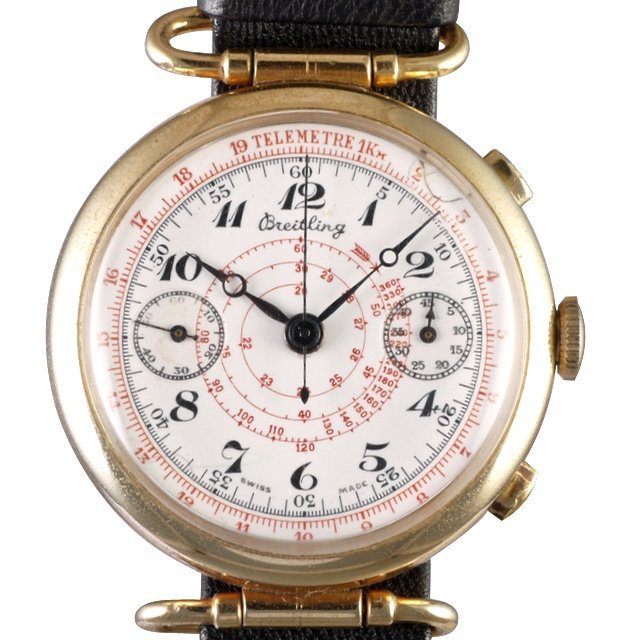
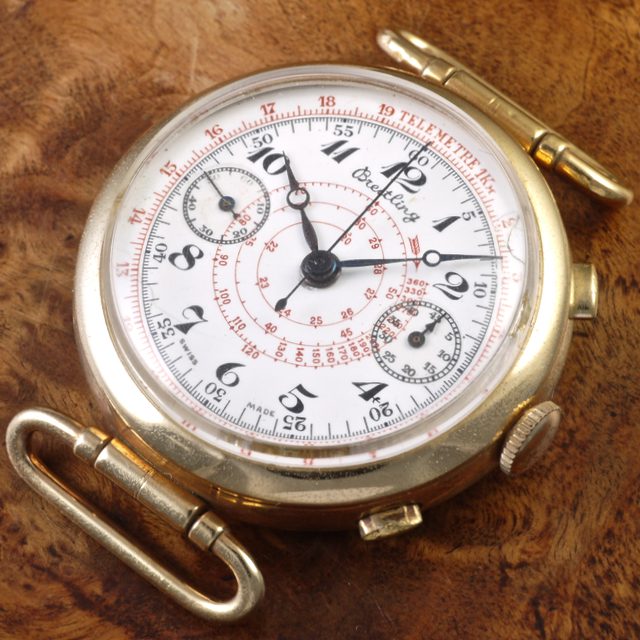
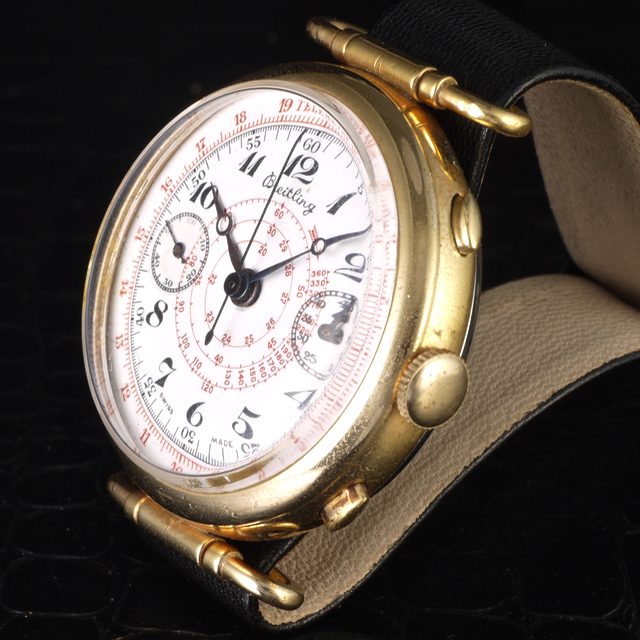
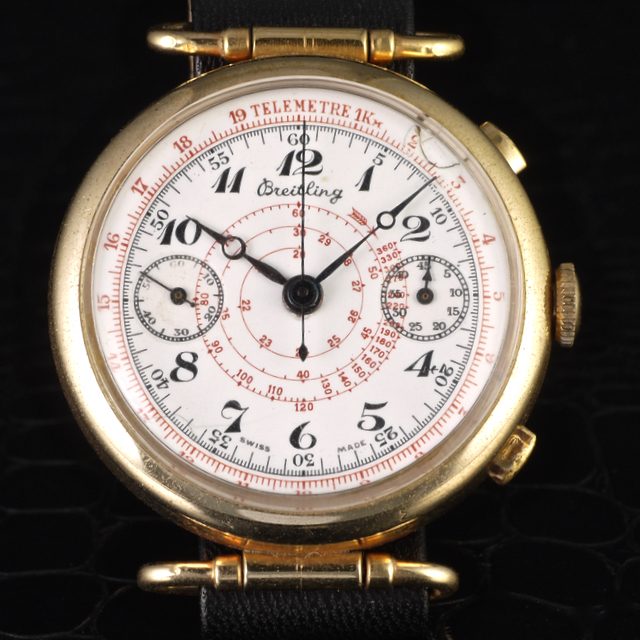
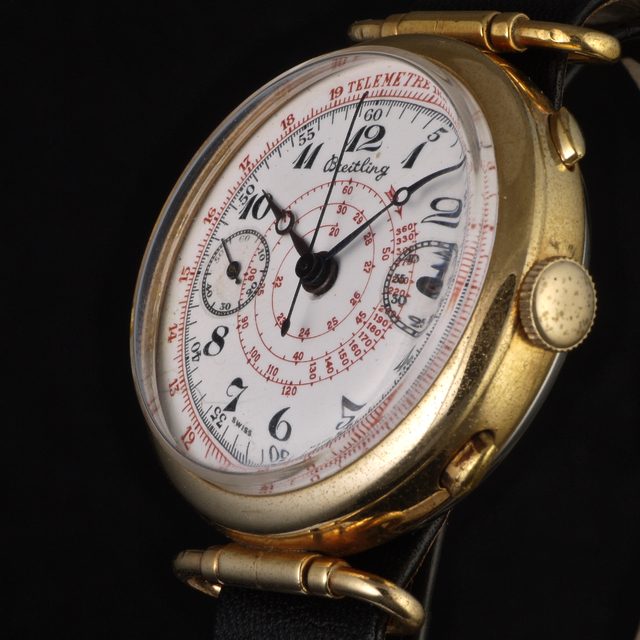
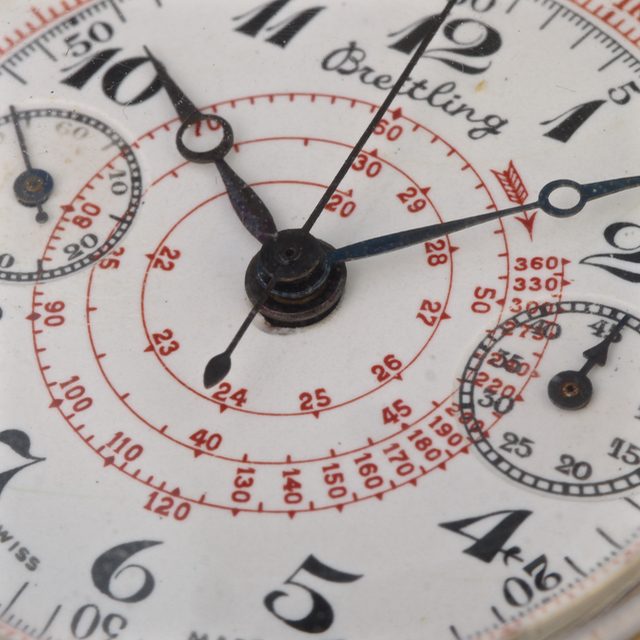
Breitling Chronograph
Hitler becomes German chancellor1933 Breitling Chronograph porcelain tachy-telemeter dial, 40.3mm. gold plated case.
Breitling has been a leading innovator in high quality stopwatches and chronographs and helped define how chronographs look and function until today.
Breitling launched the first wrist chronograph with a pusher at 2:00 in 1915, presented the first dual pusher wrist chronograph with pushers at 2:00 and 4:00 in 1933 and was one of the first manufacturers to recognize the need of early aviators for wrist watches incorporating such devices.
In 1942 Breitling introduced the Chronomat, the worlds first Smart Watch, a chronograph with a rotating logarithmic slide rule that allowed complex calculations with the turn of your fingers.
Throughout the 1930s to 50s, Breitling continued creating chronographs with different scales to suit different professions, such as tachymeters for production engineers and drivers, and pulsometers for doctors.
A tachymeter scale measures how fast an object is moving. The scale can be found either on the dial or in the bezel. Most tachymeters start at 400 and end at 60, but some models can show different numbers. Its very simple to calculate the speed: just mark a point and push the start button. After the object has moved for one kilometer (or mile), push the stop button.
A telemeter scale measures the distance between the user of the watch and the event seen and heard. It was used extensively to calculate when artillery fired. When you saw the light of the shot of the artillery, you would push the start button and push the stop button when the thunder was heard. The number shown in the scale refers to the distance.
The concept of the wristwatch goes back to the early 16th century when Elizabeth I of England received a wristwatch from Robert Dudley in 1571.
Wristlets, as they were called, were reserved for women. Men considered that wristwatches were too small to be properly engineered in order to keep time accurately.
This all started to change in the nineteenth century wars, when early models were essentially standard pocket-watches fitted to a leather strap. By the early 20th century manufacturers began producing purpose-built wristwatches. The Swiss company, Dimier Frres & Cie patented a wristwatch design with the now standard wire lugs in 1903.
After the WWI was over, thousands of veterans were demobilized and went back to civilian life wearing the wristwatch that had served them faithfully. Seeing these battle hardened veterans wearing their wristwatches changed the public perception that wearing a wristwatch was not manly, and sales of the men wristwatches take off.
